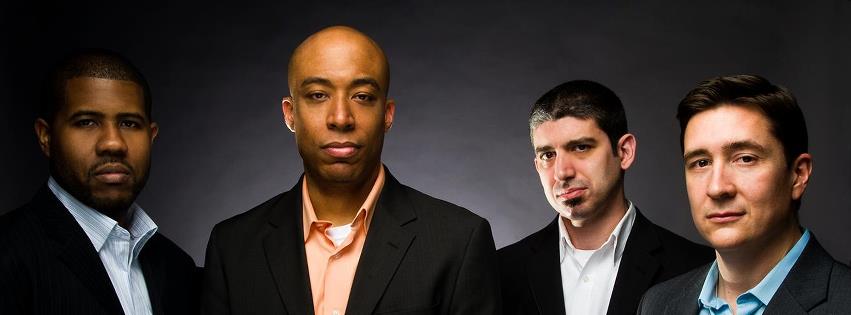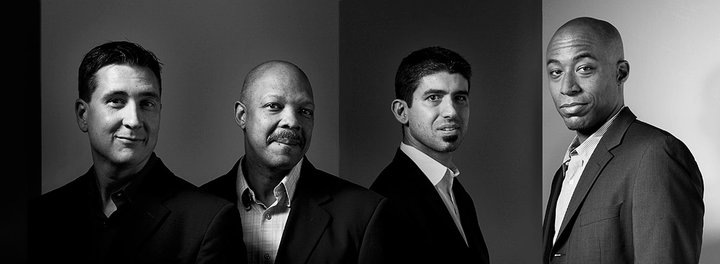Although saxophonist and composer Chris Greene was reared in Evanston, he considers himself a Chicagoan. His first instrument he learned to play was a saxophone at age 10 through the citywide programs offered in the Chicagoland suburb.
Greene says the city had a decent citywide music program. A representative from the local music store within the program would offer demonstrations of each instrument to third, fourth and fifth graders in an effort to drum up interest for students to partake in lessons and participate in the city band.
From the time he started playing the saxophone to high school, Greene admits he didn’t know much about jazz. His parents listened to R&B, soul and funk of the 70s. While he played in the jazz band during middle school and high school, the musician developed a familiarity with the artists of the compositions he played.
“You hear the names of the compositions you play, the so-called brand names of jazz,” he says “I knew Charlie Parker, Duke Ellington and sort of knew Coltrane.”
Greene did not cultivate his passion for Jazz until his junior year of high school, and says he fell into jazz because he was good at playing the saxophone.
“If you are playing the saxophone, more or less you are going to be asked by the jazz band director, if you’re any good and to play in the jazz band.”
Like other artists, the Evanston native captured the attention of others as he played in various bands during high school.
“I would jam out with some high school bands when I was 17 and 18, and then I noticed some adults and professionals start asking me to jam with them,” he recalls.
After he returned from Indiana University in 1994, Greene formed his first band, Chris Greene and New Perspective. He spent 10 years with this band, which is where he developed his creative expression with the use of different styles of music. He fused Classical Jazz, the R&B influences his parents listened to, along with Hip Hop. Green says those genres heavily influenced his sound during the early years of his career.
Upon his departure from New Perspective, Greene formed his present band called The Chris Greene Quartet, which implements more acoustic Jazz elements and with the same funky R&B elements. Damien Espinosa his last piano player was his first choice for the CG Quartet. His bassist Mark Piane played several gigs with him over a span of 10 years, and he was his first choice for playing bass. Steve Corley rounds out the quartet as drummer who has been with the quartet for a year.
The Chris Greene Quartet
Some may say Greene’s quartet morphed into an acoustic band, but he references the influences of which the band is composed and discusses his concerns with how music is labeled.
“I have a love and respect for traditional Jazz, but I deal with it in my own way,” he adds. “That’s the problem with labels. Everyone is going to see it differently. Everyone is going to hear what I do differently. Everyone has a different take on Jazz. Some hear a song they want to get married to, while others hear noise.”
Greene says he aspires to utilize all of his influences and express them in his music in a unique way.
“I listen to fusion and Neo Soul and take what I need from it,” he comments “My job as a musician is to be inspired by different types of music.”
The composer agrees there is a lack of Jazz radio stations and many Jazz venues don’t have a strong showing of African-Americans in their audiences.
“We as black people have a bad habit of creating music, but don’t really support the people who are really doing it,” he says “I won’t say black people don’t support Jazz, but if you go to a smooth Jazz concert, you will see plenty of black folk at Close Up 2 [a Chicago Jazz club] for example, unlike the Green Mill on the north side of Chicago that plays more traditional Jazz music”.
Greene also attributes some of the demise of live Jazz to the arrival of the Internet.
It was inevitable,” he says. “Why sit in front of a radio when you can listen to it online, or listen to the live version of it on You Tube or download to iTunes? This is an instant gratification society. It’s good for technology, but bad for radio stations because there is a format that they have to play.”
Greene’s 2011 release was recorded live at the Mayne Stage in Rogers Park, a north side community of Chicago. He gives his drummer Steve Corley credit for helping him take his personal playing to a whole new level.
“The stars aligned all at the right time,” Greene admits. “The Mayne Stage expressed interest in putting a show together. I wanted to capture this next level, so what better way to capture than a live recording.”
Greene recorded nine songs and six ended up on the CD. Greene says his drummer is just a great musician. “He put a whole different spin on songs that we had already played and put his personality in the new songs by basically transforming the ideas I already had, enhancing them and made them more fun to play. It was just a deeper musical vibe.”
Despite his hectic music career, the jazz musician says family remains a priority for him.
“I have a pretty supportive family and wife,” he admits. “This is what I want to do. She is cool with that. Priority is family first. If I get cranky, my wife says I need to go play some music. It’s about balance. Music is my livelihood. I am blessed to make a living at what I love to do. It is busy, but never rigorous or out of control.”
Fans can catch the Chris Greene Quartet at several Jazz staples in Chicago including The M Lounge, Andy’s Jazz Club & Restaurant, Pops for Champagne and the Jazz Showcase, along with some of the larger summer festivals, such as the Taste of Chicago and the Custard Festival in Evanston.
by Kimberly L. Weatherly



